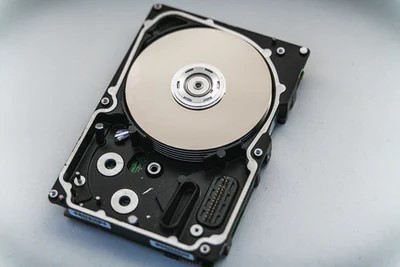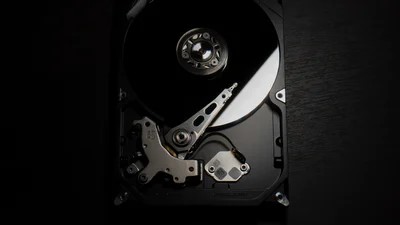Technology is a fragile thing. Hard drives and other digital storage devices can fail without a warning, leaving you with lost data that may be impossible to recover. While their odds of failure are small, it's important to know how to handle these situations to avoid any long-term consequences. In this article, we'll discuss some reasons why your hard drive might have failed as well as steps you can take for data recovery.

Reasons Why Hard Drives Fail
Hard drives have moving parts, which means that they can break down and fail over time. Besides mechanical failure, electrical malfunctions may also cause it to become non-functional. Most of these failures are completely random but there are some instances where data loss may be attributed to previously faulty hardware components.
1. Faulty Management System
A management system is a vital component of any hard drive. It's the software that oversees all of the hardware components and ensures they're functioning properly. If you try to read or write information on a hard drive without its management system, you will see an error message, which means that the data could be lost forever.
2. Media Errors
Media errors occur when a hard drive is unable to properly process the data that it's trying to read. In most cases, media errors are due to physical damage on the surface of the platters where data is stored. This can happen if you accidentally drop your computer or store it in an area with rapid temperature changes, which causes the platters to expand and contract. It's also possible for software problems and file corruption to cause media errors.
3. Drops, Crashes, & Other Physical Damage
It may seem like common sense, but hard drives must be handled with care to avoid physical damage. Dropping a computer or subjecting it to other sudden impacts can cause the drive to be damaged, which makes it difficult for you to recover lost data. Drive crashes may also lead to file corruption or data loss due to a sudden power outage that causes all of the saved information on it.
4. File Corruption & Accidental Deletion
Corruption and deletion can be caused by software malfunction or human error, and both of these issues can be avoided with a regular process of data backup. If you're familiar with common warning signs that your data is in danger (such as missing files that have been recently updated), then you will be able to restore your files before it's too late.
5. Electronics Failures & Interference
The circuits within a hard drive can break down due to overheating or some other form of electrical interference. You may not be able to tell if your hard drive is vulnerable, but that doesn't mean you should take any risks with it. Always make sure that you're using proper data storage practices and avoid exposing your computer to rapid changes in temperature or physical shock.
Recovering Data: What to Do Next
Unfortunately, it's not always possible to get back the lost information on a damaged hard drive. It depends largely on how severe the damage is and what kind of data recovery software you're using. If your hard drive has completely failed and isn't even showing up on the computer, you won't be able to read or write information from it. In this case, your only option is to use a data recovery service or hardware engineer who will perform the work for you. However, according to the experts at Recovered Data Recovery, a firm that specialises in restoring failed hard drives, some damage can be fixed if you're willing to put in the time and effort. If it is showing up on your computer but has serious media errors, file corruption, or other mechanical failures, there is a chance you can recover data from it. This may be inconvenient and time-consuming, but it will save you the cost of replacing it or hiring a professional to do the work for you.
1. Use a Recovery Software
The most common way to recover data from a hard drive is by using a piece of software that can scan the drive and look for files that are still accessible. If your data is stored on multiple drives, you will most likely have to run the software program on each one individually. Most professionals recommend starting with the main hard drive that has the most valuable data and work your way through other drives from there.
2. Run a Virus Scan
If you're using a recovery software program that searches for specific file extensions, it's important to run an antivirus scan on your hard drive first. This will ensure that any malicious viruses or malware are removed before they can damage your data. If you're using a computer that has been infected with malware, then your recovery software won't be able to work properly or even at all. Make sure the virus scan is up to date and run it before proceeding with the file recovery.
It is important to be fully aware of the security risks associated with compromised hardware. If a virus or malware is allowed to infect a company’s network, the implications are potentially disastrous, especially in enterprise settings, where users may have been given unnecessary access to secure systems. Thankfully, Identity Governance and Administration (IGA) solutions can mitigate such risks.
3. Check for Errors
If you have a drive failure but were able to save your computer's data on an external hard drive, you may be able to recover the files from there. However, it's important not to attempt this unless you have a good backup plan in place beforehand. Errors can occur while running recovery software programs or performing other actions that require writing or reading information from it. These errors can cause further damage to your data, and you may be unable to recover the information at all.
4. Clean the Drive
Another procedure that can help your recovery software locate and restore data is to clean the hard drive's read heads. This will ensure that the software can detect all of your files without any problems. To do this, you'll need a vacuum cleaner and soft cloth to remove dust and dirt from it. Never use water, alcohol, or any other chemicals on the drive’s read heads.

While hard drives often fail suddenly and with little warning, it's important to remember that there are steps you can take to prevent data loss. Although recovering the data is the most common solution for fixing a damaged hard drive, it doesn't always work. If you're not sure whether your information can be saved or if it has completely crashed, it's best to contact a professional or data recovery service.







